| Author |
Message |
anth
Member
|
# Posted: 4 Nov 2006 03:35
Reply

They may have been evil, and hell bent on world domination. A James Bond script writers best friend!
But, you cannot ignore the fantastic achievement of the Soviet Union in space.
A string of space firsts by the Soviets stunned the west. Including...
The First artificial satellite in space, Sputnik.
The first man in space, Yuri Gagarin.
The first woman in space, Valentina Tereshkova.
The first "space walker", Alexie Leonov.
The first space station.
The first landing on Mars, Venus, and the Moon by an unmanned probe.
In this thread i'll be uncovering Soviet space endevours. They recieve little attention. But, given the technology used, and the simplicity of much of their hardware, these are truly memorable achievements.
Not many realize just how close the Russians came to beating the USA to the Moon.
I'll be looking at Soviet manned flight, and their program of interplanetary exploration.
Hopefully we'll see another side of space history, not often given the light of day.

To kick things off, here are a few images from the Soviet ZOND unmanned probes. Which explored space between Earth and the Moon in the late sixties and early 70's.









|
anth
Member
|
# Posted: 11 Nov 2006 09:59
Reply
Buran - The Soviet Space Shuttle

The Soviet space shuttle Buran ( snowstorm ) may look like the NASA shuttle. But, we were assured it was the product of "paralell evolution" by Soviet scientists.
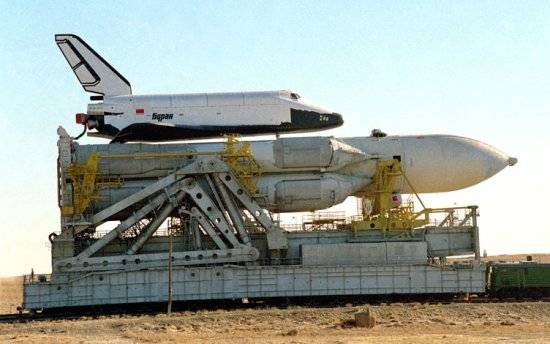
We all know it was a copy! But, like many designs based on an original, improvements were made. Some minor advances in aero dynamics are featured on the Soviet version. However, the big differences come in the fact that the Buran had no main engines. Just orbital manuevering thrusters. All the thrust for lift off came from the Energia launch vehicle.
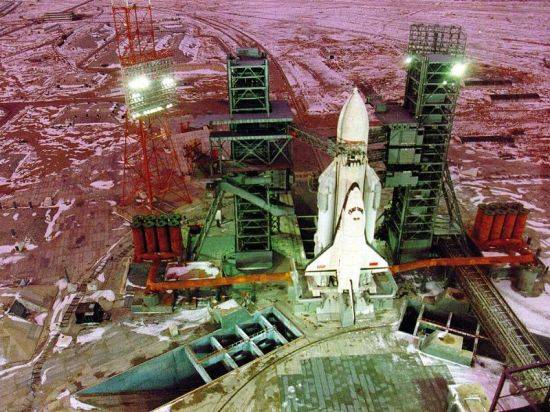
This meant it could carry 30 tons into orbit. Thats about 5 tons more than the NASA shuttle. It also left the Soviets with a stand alone rocket capable of lifting the biggest ever payloads into orbit. Simply remove the shuttle and you can launch a manned Mars space ship for example! Or a huge chunk of space station!
This is basically what NASA are trying to do right now. Adapting shuttle launch hard ware to serve their Moon and Mars manned program.
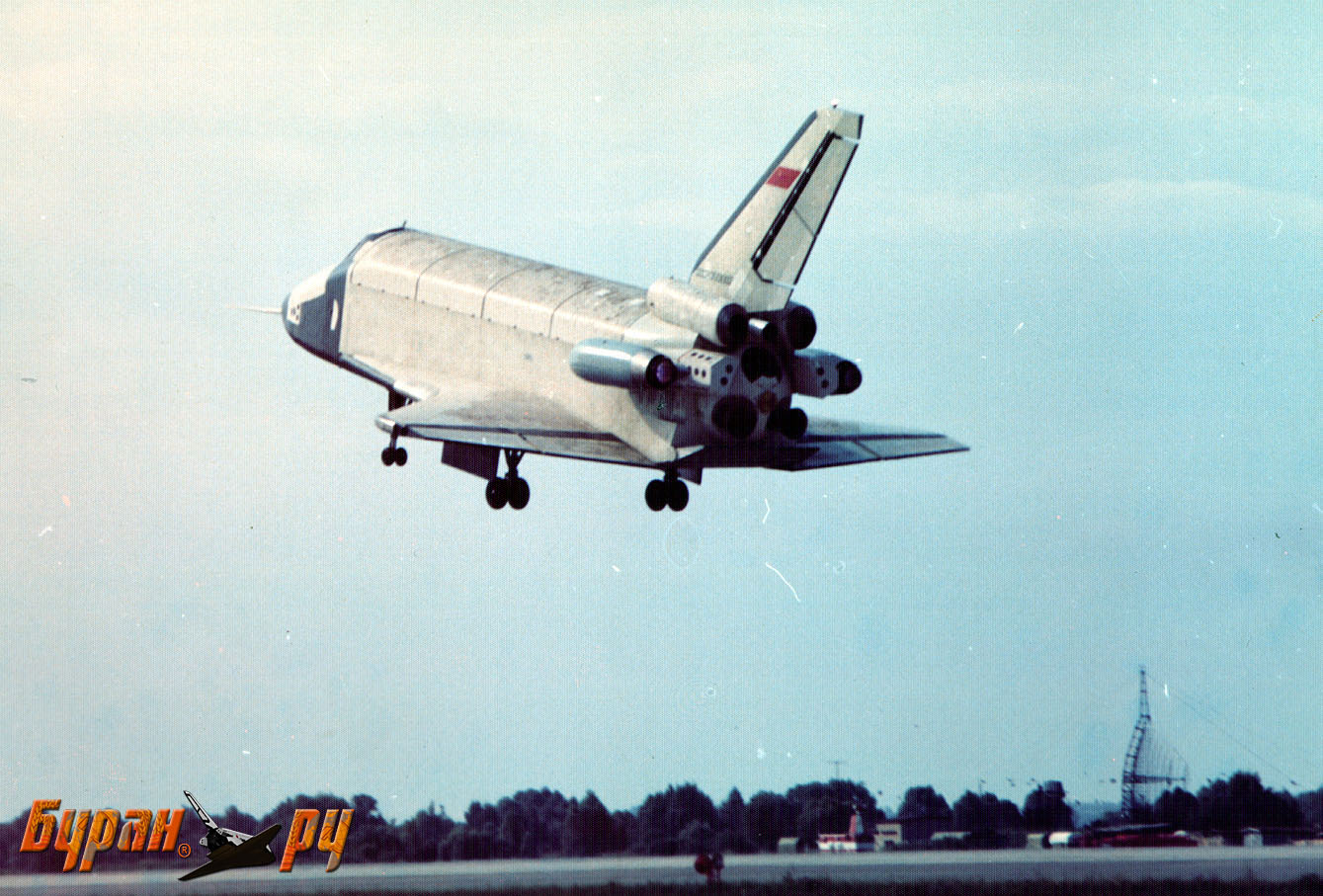
( Buran prototype fitted with SU-27 Jet fighter engines for flight in our atmosphere. )
The Soviet shuttle design flew many times in our atmosphere. Buran flew into orbit just once. Making two unmanned orbits around the Earth. Then landing by remote control.
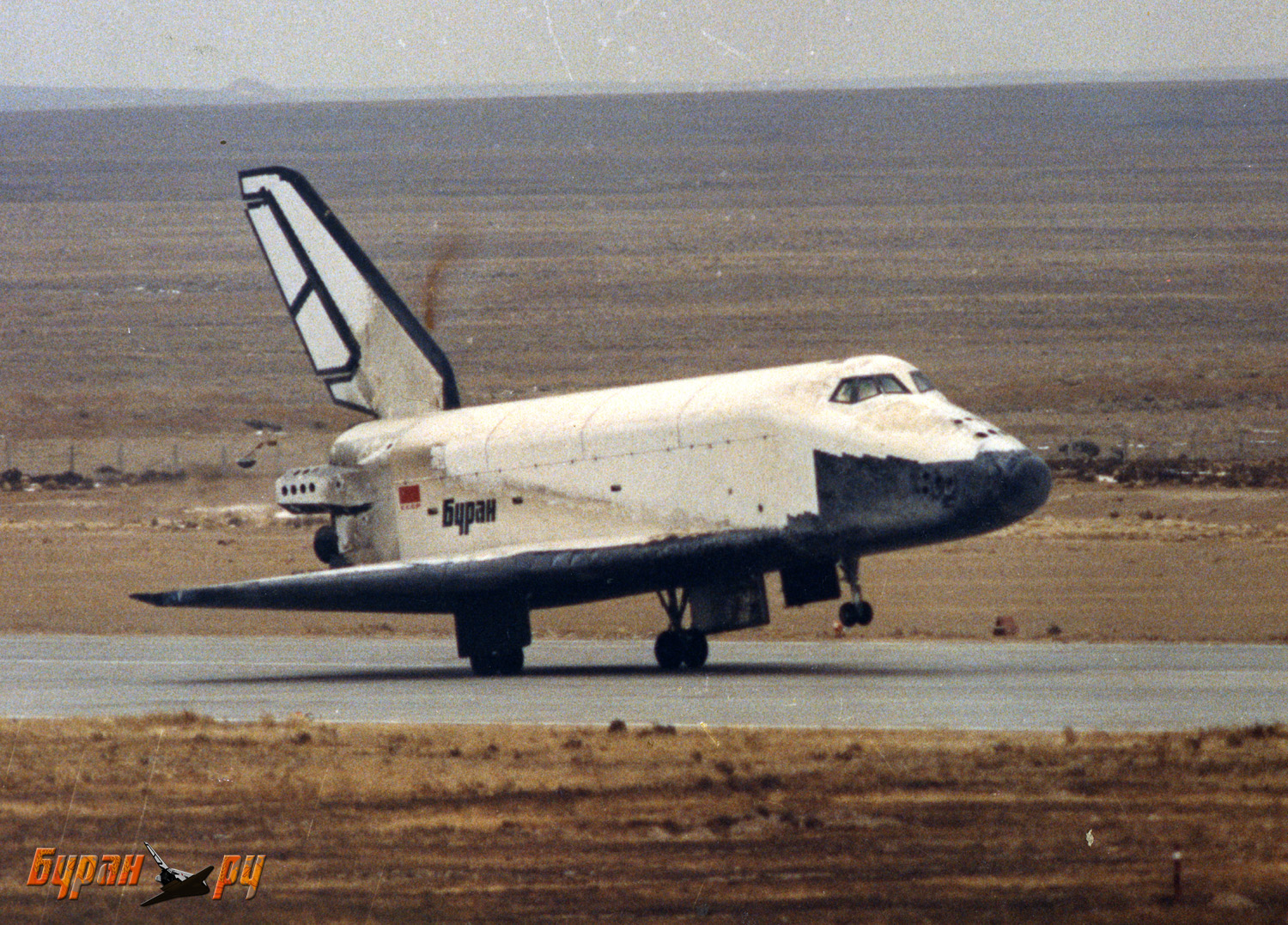
The Soviet shuttle program was a victim of the fall of the Soviet union. The program was officialy cancelled in 1995 though. Shuttles now sit in amusement parks in Russia.
The vehicle bearing the name Buran that actually flew into space was the only one kept and stored at the Russian Cosmodrome. Although people still work in the half of the building that did not collapse there has not been any repair work done on the building and no attempt to clear the debris. The destruction of the Buran has not been verified and there have been no reported attempts to remove it from the collapsed building either. There have been a few rumors about returning it to service to replace the Columbia but as far as is currently known it is still laying under rubble. Even if the Buran was to be recovered and repaired, the current tense political situation between Russia and Kazakhstan makes that possibility extremely remote. The Russians have probably written the Buran off as having been destroyed by the collapse.

I really like the Buran shuttle. You can bet that, given the chance it would have been a traditional Russian work horse. I guess it's pride that kept American money from ressurecting it. It certainly would have solved many problems faced building the space station. A logical replacement for the ageing and depleted NASA fleet.
Plus, if the new plans to return to the Moon were international, the Energia launch vehicle would have served as the number one choice to lift men towards the Moon, and onwards to Mars.

NASA are just turning their thoughts to making the Shuttle return from space empty, by remote control in the event of another Columbia incident being detected. Astronauts would seek refuge on the space station, and the shuttle would fly home on its own. Well, Buran did this on day one of its space faring life.
With new partnerships being made in space flight between Europe and Russia. Maybe the Soviet shuttle design could fly again some day? A small reusable shuttle called clipper which will sit atop a Russian Soyuz rocket is the result of this new partnership.

But, emerging stories of a Chinese / Russian partnership in space could maybe see the need for a full blown Shuttle when China begins construction of its space station, and it looks to begin its announced manned Moon landings. Why spend money on a new design when Buran did so brilliantly? Both China and Russia have always put simplicity and logic into their space programs. As a result, i can see the day when Buran flies again.
|
aeon
Member
|
# Posted: 11 Nov 2006 10:13
Reply
I like the pictures of Earth and Moon. 
|
anth
Member
|
# Posted: 11 Nov 2006 11:06
Reply
Aeon : Thanks 
I really liked those. Some of which i've never seen before i posted them here.
That's really the point of this thread. I'm trying to spotlight imagery that lays below a quick "google" for space stuff.
NASA, rightly so, do hog the lime light. They deserve every ounce of praise and exposure.
But, hopefully we can see something new here.
I'd also like to say thanks to Aeon, Comdr_Worf, QD, and others for your posts. You've made it a real pleasure to run this forum. 
I hope i can continue to find windows out into space from the Outpost for everyone.
|
anth
Member
|
# Posted: 12 Nov 2006 03:56
Reply
Phobos 2 - The Mysterious mission to Mars

I genuinely was suprised when i began looking up information on the Soviet Phobos 2 probe from the 80's.
Apparently a whole UFO cover up conspiracy has grown up around the demise of this space craft!
I was totally unaware of this until now.
This is down to 2 things. An image which shows a shadow.
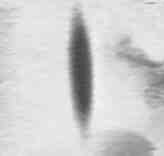
And the last dramatic image from Phobos 2.
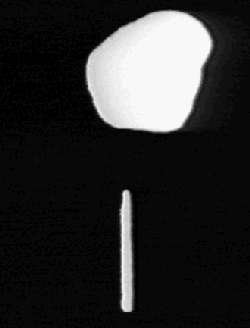
First off, the shadow looks identical to many eclipse shadows imaged by newer Mars probes, as the Martian moons Phobos and Deimos cast shadows on the surface. At the time of the Phobos 2 mission it had never been seen before though.


( Mars Global Serveyor image of a Martian eclipse. )
The second B&W image is apparently showing a UFO over 20 miles long, and 1.5 miles wide!
Phobos 2's instruments read this object as being non metallic and as a result a natural phenomena.
We must also remember the exposure time for this image was 8 seconds. If a small object in Mars orbit, or one falling towards Mars entered the frame it would appear as a streak in a long exposure image like this.
It's unfortunate that the Phobos 2 probe sent this as its last image. because it's obvious people will say the UFO, angry at being discovered, "took out" Phobos 2!
The behaviour of the Soviet scientists did help this situation, and has also contributed to the conspiracy theory. The image was never released officialy, and as the image was recieved on the screens provided for visitors and guests to mission control they shut everything off, and told everyone it was all over, and they had to leave.
Throw secracy into the mix, and the conspiracy theorists have a field day!
I know some Soviet scientists did believe they had encountered a UFO. It cannot be ruled out. But i do not believe it myself.
I put the demise of Phobos 2 down to yet more bad luck at Mars for Russia and the Soviet Union. Their record at Mars is littered with disasters, not one Soviet or Russian mission ever worked properly. Phobos 2, was literally on borrowed time as it neared Mars, failures meant it was running on reduced, back up power.

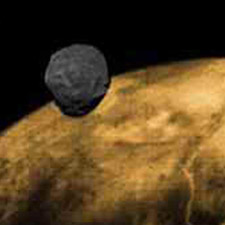

Mission Overview
The Phobos 2 mission was launched on 12 July 1988 from Baykonur Cosmodrome. The primary objective of the mission, as with its sister probe Phobos 1, was to explore the larger of Mars' two moons, Phobos. In addition to instrumentation to explore the Martian satellites, Phobos 2 also carried instruments to study the Sun, Mars, the interplanetary medium, and gamma-ray burst sources.

The Phobos 2 spacecraft arrived at Mars on 30 January 1989, but was lost while maneuvering in Martian orbit to encounter Phobos on 27 March 1989. The loss was traced to either a failure of the on-board computer or of the radio transmitter (which was already operating on the backup power system).
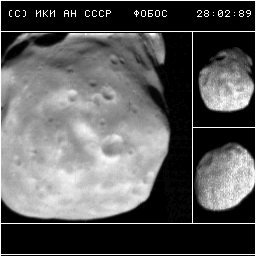


Had it survived. Phobos 2 would have landed a "hopping" probe on to the surface of Phobos. Also high powered lasers would have been fired at the moon, then the debris tested onboard as it swooped down. Pity it didnt fire those "lasers" at the UFO! 
Enhanced Phobos 2 images
R.Nunes, an amatuer enthusiast has looked again at the Phobos 2 data. Making these enhanced views from the old TV camera pictures captured during the mission.



|

